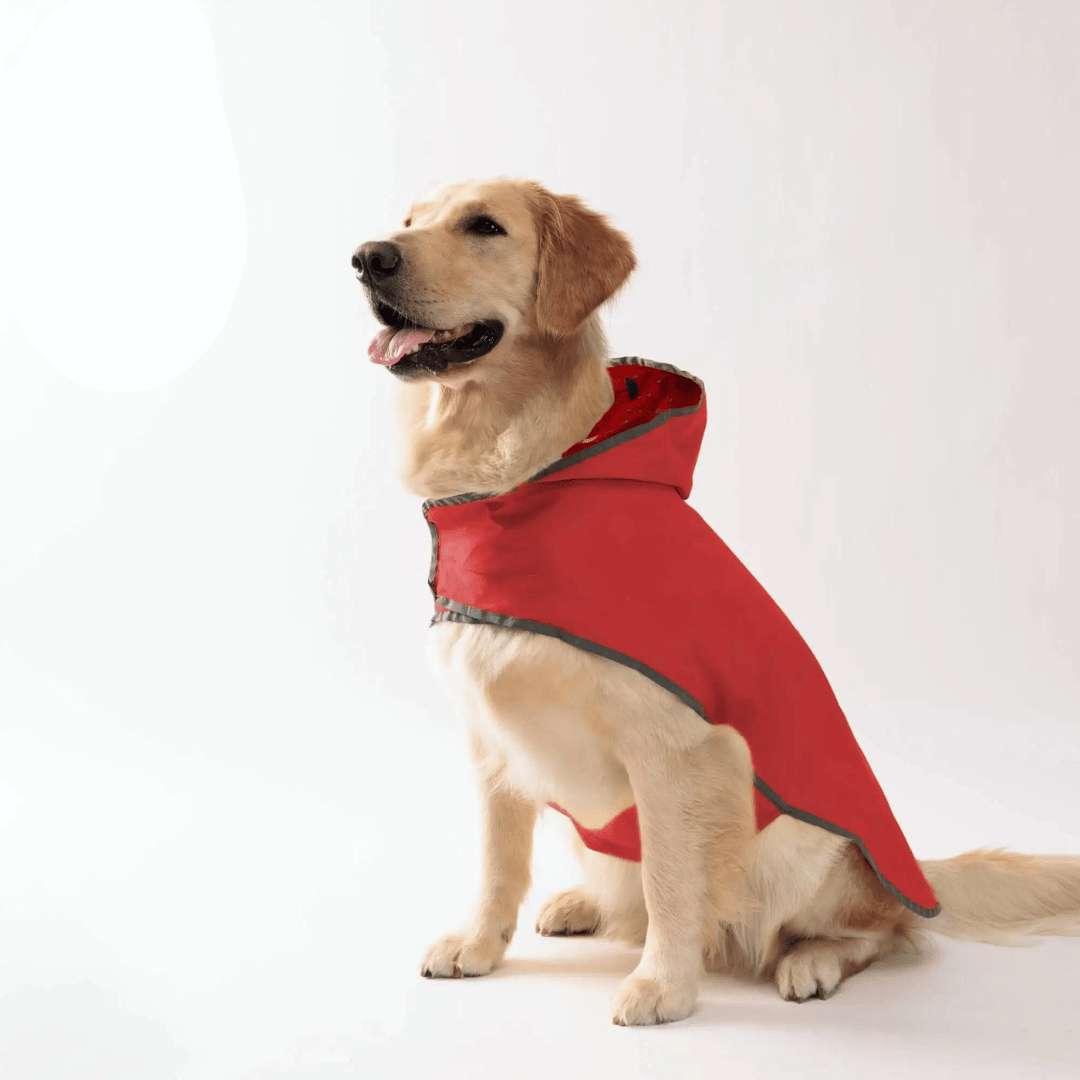
Best Materials for Dog Raincoats
Best Materials for Dog Raincoats: Comfort & Protection
As of August 2025, choosing the right material for your dog's raincoat is more crucial than ever to ensure their comfort, protection, and the longevity of the garment. This article was recently updated to ensure its timeliness and accuracy. We'll explore the various materials used in dog raincoats, their unique benefits, and provide essential tips for selecting the perfect one for your furry friend, keeping current weather patterns and active lifestyles in mind.
Why Material Matters
The material of a dog raincoat affects its waterproofing capabilities, breathability, durability, and overall comfort for your dog. Choosing the right material can make a significant difference in how effective and comfortable the raincoat is.
Common Materials Used in Dog Raincoats
Nylon
- Waterproofing: Nylon is highly waterproof, making it an excellent choice for rainy weather. It effectively keeps your dog dry even in heavy rain.
- Durability: This material is known for its strength and durability, making it suitable for active dogs that enjoy running and playing outdoors.
- Lightweight: Nylon raincoats are generally lightweight, allowing your dog to move freely without feeling weighed down.
- Breathability: While nylon is waterproof, it may not be as breathable as other materials, so it’s essential to look for designs with ventilation features.
Polyester
- Waterproofing: Polyester is another popular waterproof material used in dog raincoats. It offers good protection against rain and wind.
- Durability: Polyester is durable and resistant to tearing, making it ideal for energetic dogs.
- Breathability: Polyester is generally more breathable than nylon, making it a more comfortable option for longer wear.
- Lightweight: Like nylon, polyester raincoats are lightweight and do not restrict your dog’s movement.
PVC (Polyvinyl Chloride)
- Waterproofing: PVC is completely waterproof and provides excellent protection against heavy rain.
- Durability: PVC is highly durable and can withstand rough use. However, it can be stiffer compared to nylon and polyester.
- Breathability: PVC raincoats are not very breathable, which can make them less comfortable for extended wear.
- Weight: PVC materials tend to be heavier, which might be less suitable for smaller dogs.
Rubberized Fabrics
- Waterproofing: Rubberized fabrics offer exceptional waterproofing, keeping your dog dry in the wettest conditions.
- Durability: These fabrics are durable and can handle rough outdoor activities.
- Breathability: Rubberized fabrics are not very breathable, which may cause discomfort if worn for long periods.
- Weight: These fabrics can be heavier, potentially limiting your dog’s movement.
Fleece-Lined Fabrics
- Waterproofing: Fleece-lined fabrics combine a waterproof outer layer with a warm inner lining, providing both rain protection and insulation.
- Durability: These materials are durable and suitable for cold and wet weather.
- Breathability: Fleece linings add comfort and breathability, making these raincoats ideal for colder climates.
- Weight: The added fleece lining increases the weight slightly, but the extra warmth is beneficial for colder days.
Factors to Consider When Choosing Material
Climate and Weather Conditions:
- For heavy rain and wet conditions, opt for materials like nylon, polyester, or PVC for their waterproofing properties.
- For cold and rainy climates, consider fleece-lined raincoats that provide both warmth and waterproofing.
Activity Level:
- For active dogs, choose durable materials like nylon or polyester that can withstand rough play and frequent use.
- Ensure the material allows for easy movement and does not restrict your dog’s activities.
Breathability:
- If your dog will be wearing the raincoat for extended periods, choose breathable materials like polyester to ensure comfort.
- Look for raincoats with ventilation features, such as mesh linings or underarm vents.
Size and Weight of Your Dog:
- For smaller dogs, lightweight materials like nylon and polyester are ideal to avoid any added weight.
- Larger dogs can comfortably wear heavier materials like PVC or rubberized fabrics.
Conclusion
As of August 2025, selecting the ideal material for your dog’s raincoat remains paramount for their comfort, protection, and unhindered mobility. By thoroughly understanding the distinct advantages and limitations of various materials discussed here, you are now well-equipped to make an informed decision that perfectly aligns with your dog's individual needs and the prevailing climate conditions. We hope this updated guide empowers you to choose a raincoat that keeps your beloved pet dry and happy for seasons to come. For further insights on selecting the best dog raincoat, consider exploring our comprehensive guide to dog raincoats and learning about the key benefits of dog rain protection. For practical advice, review our detailed guide on how to accurately measure your dog for a perfect raincoat fit. Additionally, for broader market insights and top product selections, consult this independent review of best dog raincoats.
FAQ: Choosing Dog Raincoat Material
- What is the best material for a dog raincoat? Nylon and polyester are popular choices for their waterproofing, durability, and lightweight properties.
- Are PVC raincoats comfortable for dogs? PVC raincoats are waterproof and durable but may not be as breathable or comfortable for extended wear.
- What material is best for cold and rainy weather? Fleece-lined fabrics provide both warmth and waterproofing, ideal for cold and rainy climates.
When you are ready to explore high-quality options, browse our selection, including the Stylish Waterproof Dog Raincoat With Reflective Trim, designed for durability and comfort.
About Viva Essence Pet
Viva Essence Pet is your trusted partner in pet wellness, providing premium nutrition, health care products, and expert guidance for optimal pet health and happiness.
Awards & Recognition
- 2023 Pet Care Innovation Award
- Best Natural Pet Products 2022
- Excellence in Pet Nutrition 2021















